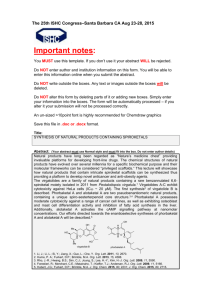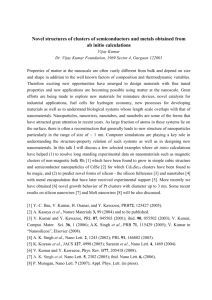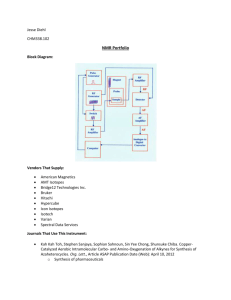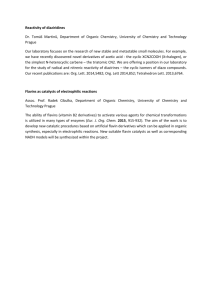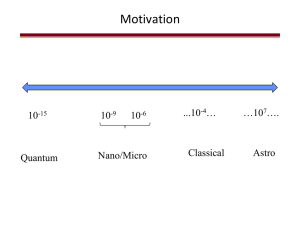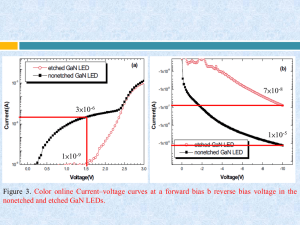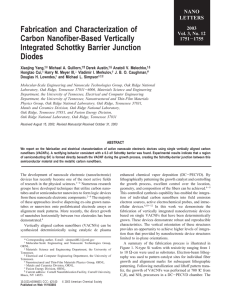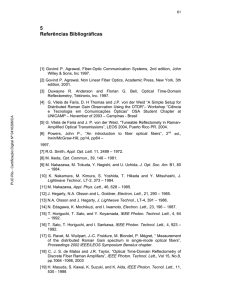spm-based approaches towards integrated, portable, nano
advertisement
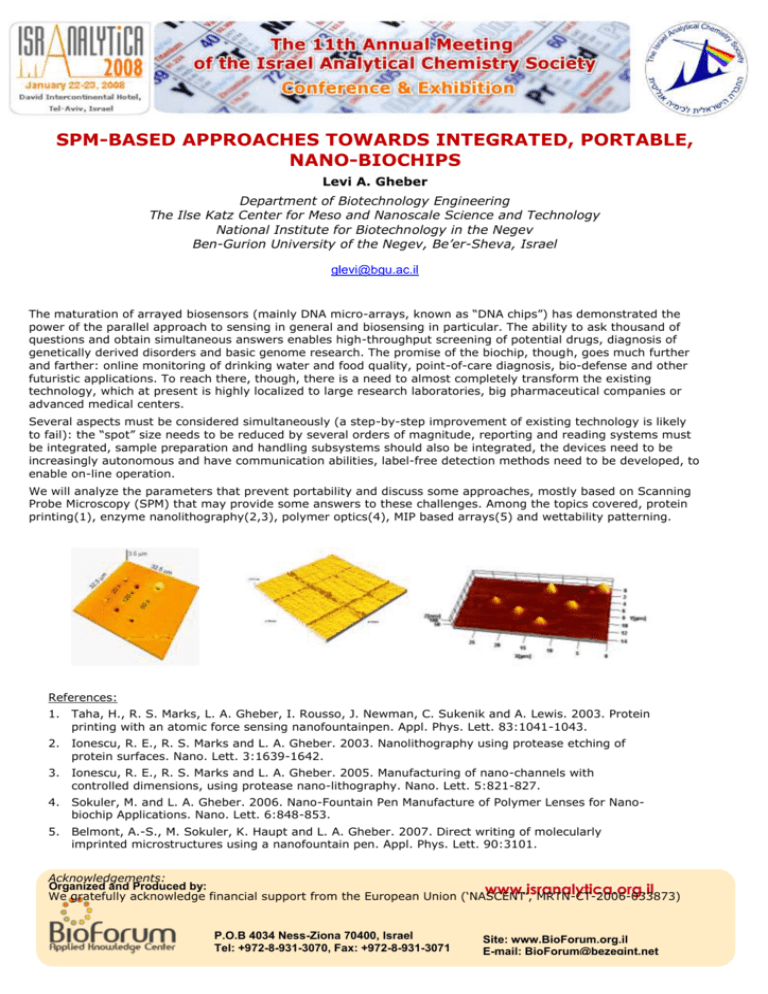
SPM-BASED APPROACHES TOWARDS INTEGRATED, PORTABLE, NANO-BIOCHIPS Levi A. Gheber Department of Biotechnology Engineering The Ilse Katz Center for Meso and Nanoscale Science and Technology National Institute for Biotechnology in the Negev Ben-Gurion University of the Negev, Be’er-Sheva, Israel glevi@bgu.ac.il The maturation of arrayed biosensors (mainly DNA micro-arrays, known as “DNA chips”) has demonstrated the power of the parallel approach to sensing in general and biosensing in particular. The ability to ask thousand of questions and obtain simultaneous answers enables high-throughput screening of potential drugs, diagnosis of genetically derived disorders and basic genome research. The promise of the biochip, though, goes much further and farther: online monitoring of drinking water and food quality, point-of-care diagnosis, bio-defense and other futuristic applications. To reach there, though, there is a need to almost completely transform the existing technology, which at present is highly localized to large research laboratories, big pharmaceutical companies or advanced medical centers. Several aspects must be considered simultaneously (a step-by-step improvement of existing technology is likely to fail): the “spot” size needs to be reduced by several orders of magnitude, reporting and reading systems must be integrated, sample preparation and handling subsystems should also be integrated, the devices need to be increasingly autonomous and have communication abilities, label-free detection methods need to be developed, to enable on-line operation. We will analyze the parameters that prevent portability and discuss some approaches, mostly based on Scanning Probe Microscopy (SPM) that may provide some answers to these challenges. Among the topics covered, protein printing(1), enzyme nanolithography(2,3), polymer optics(4), MIP based arrays(5) and wettability patterning. References: 1. Taha, H., R. S. Marks, L. A. Gheber, I. Rousso, J. Newman, C. Sukenik and A. Lewis. 2003. Protein printing with an atomic force sensing nanofountainpen. Appl. Phys. Lett. 83:1041-1043. 2. Ionescu, R. E., R. S. Marks and L. A. Gheber. 2003. Nanolithography using protease etching of protein surfaces. Nano. Lett. 3:1639-1642. 3. Ionescu, R. E., R. S. Marks and L. A. Gheber. 2005. Manufacturing of nano-channels with controlled dimensions, using protease nano-lithography. Nano. Lett. 5:821-827. 4. Sokuler, M. and L. A. Gheber. 2006. Nano-Fountain Pen Manufacture of Polymer Lenses for Nanobiochip Applications. Nano. Lett. 6:848-853. 5. Belmont, A.-S., M. Sokuler, K. Haupt and L. A. Gheber. 2007. Direct writing of molecularly imprinted microstructures using a nanofountain pen. Appl. Phys. Lett. 90:3101. Acknowledgements: Organized and Produced by: www.isranalytica.org.il We gratefully acknowledge financial support from the European Union (‘NASCENT’, MRTN-CT-2006-033873) P.O.B 4034 Ness-Ziona 70400, Israel Tel: +972-8-931-3070, Fax: +972-8-931-3071 Site: www.BioForum.org.il E-mail: BioForum@bezeqint.net
